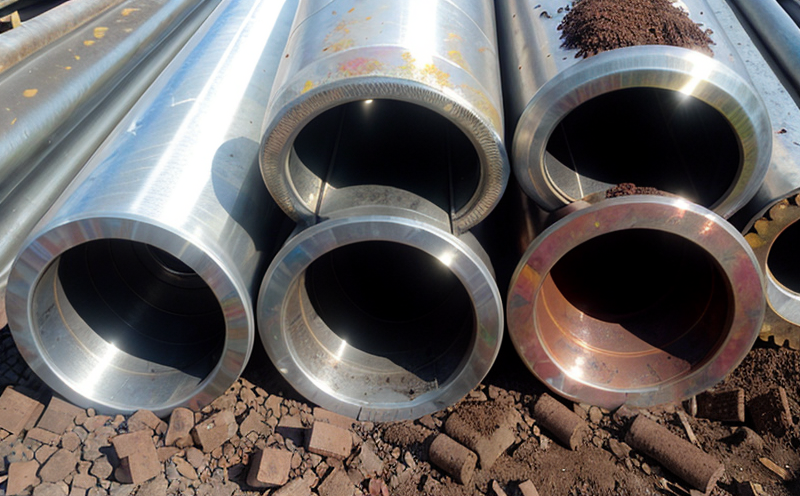ASTM F963 Heavy Metal Leachability Evaluation
The ASTM F963-17a Standard Practice for Toy Safety Testing provides comprehensive guidelines to ensure that toys and children's products meet safety standards, particularly with respect to heavy metals. One of the key parameters in this standard is the evaluation of heavy metal leachability from materials used in toy manufacturing.
Heavy metals like lead, cadmium, mercury, chromium, and others can pose serious health risks if ingested by children or exposed through prolonged contact. ASTM F963-17a specifies that certain non-ferrous metals commonly found in toys must undergo a leachability test to ensure they do not release harmful levels of heavy metals into the environment.
The ASTM F963 Heavy Metal Leachability Evaluation is a critical step in ensuring toy safety. This evaluation involves subjecting non-ferrous metal components and materials to an aqueous solution designed to simulate real-world conditions, such as sweat or saliva, under controlled laboratory conditions.
The test aims to determine the amount of heavy metals that can leach from the material into the surrounding environment. The results provide essential data for manufacturers, helping them ensure compliance with regulatory standards and protect children's health.
Here’s a breakdown of how this evaluation process works:
- Material Selection: Non-ferrous metals such as copper, zinc, tin, and nickel are selected based on their potential for leaching heavy metals.
- Test Specimen Preparation: The metal parts or components undergo careful preparation to replicate the actual use in toys. This may involve cutting samples into specific sizes that simulate real-world conditions.
- Leachate Solution: A simulated sweat solution is prepared using a phosphate buffer at pH 4.5, which mimics the acidity of human sweat.
- Incubation Period: The specimens are incubated in the leachate for several hours or days, depending on the metal and its potential for release.
- Extraction Process: After incubation, the solution is filtered to separate it from the solid material. The filter residue may then be further processed if necessary.
- Detection and Quantification: Using analytical techniques like Inductively Coupled Plasma Mass Spectrometry (ICP-MS), the amount of heavy metals in the leachate is quantified.
- Compliance Checks: The results are compared against regulatory limits specified in ASTM F963 to ensure compliance.
The importance of this evaluation cannot be overstated. It ensures that toys remain safe for children, especially those who may put them in their mouths or handle them frequently.
| Heavy Metal | Regulatory Limits (mg/L) | Description |
|---|---|---|
| Cadmium | <100 | Used in some plastics and coatings. |
| Lithium | <45 | Present in batteries used in toys. |
| Lead | <90 | Historically used in paints, but now restricted. |
| Heavy Metal | Regulatory Limits (mg/L) | Description |
|---|---|---|
| Manganese | <2000 | Used in some alloys. |
| Copper | <1000 | Commonly used as a coating for other metals. |
| Nickel | <45 | Used in some alloys and coatings. |
The data from these tests is crucial not only for compliance but also for understanding the potential risks associated with specific materials. This information can guide manufacturers in selecting safer alternatives or optimizing processing methods to reduce leaching.
Why It Matters
The safety of toys and children's products is paramount, especially given that young children often put toys into their mouths or play with them for extended periods. Heavy metal contamination can lead to serious health issues, including developmental delays, organ damage, and even death.
The ASTM F963-17a standard specifically addresses the risk of heavy metal leaching from non-ferrous metals used in toys. Compliance with this standard helps ensure that the products are safe for children to play with, thereby protecting public health and safety.
Non-ferrous metals like copper, zinc, tin, and nickel are widely used in toy manufacturing due to their durability and aesthetic appeal. However, these materials can also contain trace amounts of heavy metals that may leach into the environment under certain conditions. By conducting a thorough evaluation of the leachability of these metals, manufacturers can identify potential risks early on and take corrective actions if necessary.
The results of this evaluation are not only important for compliance with regulatory standards but also provide valuable insights for improving product design and manufacturing processes. For instance, understanding which materials pose higher risks allows manufacturers to choose safer alternatives or modify their production methods to minimize the risk of heavy metal contamination.
Moreover, the findings from these tests can help in educating both consumers and regulators about the safety of toys and children's products. By highlighting potential risks associated with specific materials, this evaluation process helps build trust between manufacturers, regulatory bodies, and consumers.
In conclusion, the ASTM F963 Heavy Metal Leachability Evaluation is a critical step in ensuring that toys remain safe for children to play with, thereby protecting public health and safety. It provides essential data that can guide manufacturers in selecting safer alternatives or optimizing their processes to minimize risks associated with heavy metal contamination.





